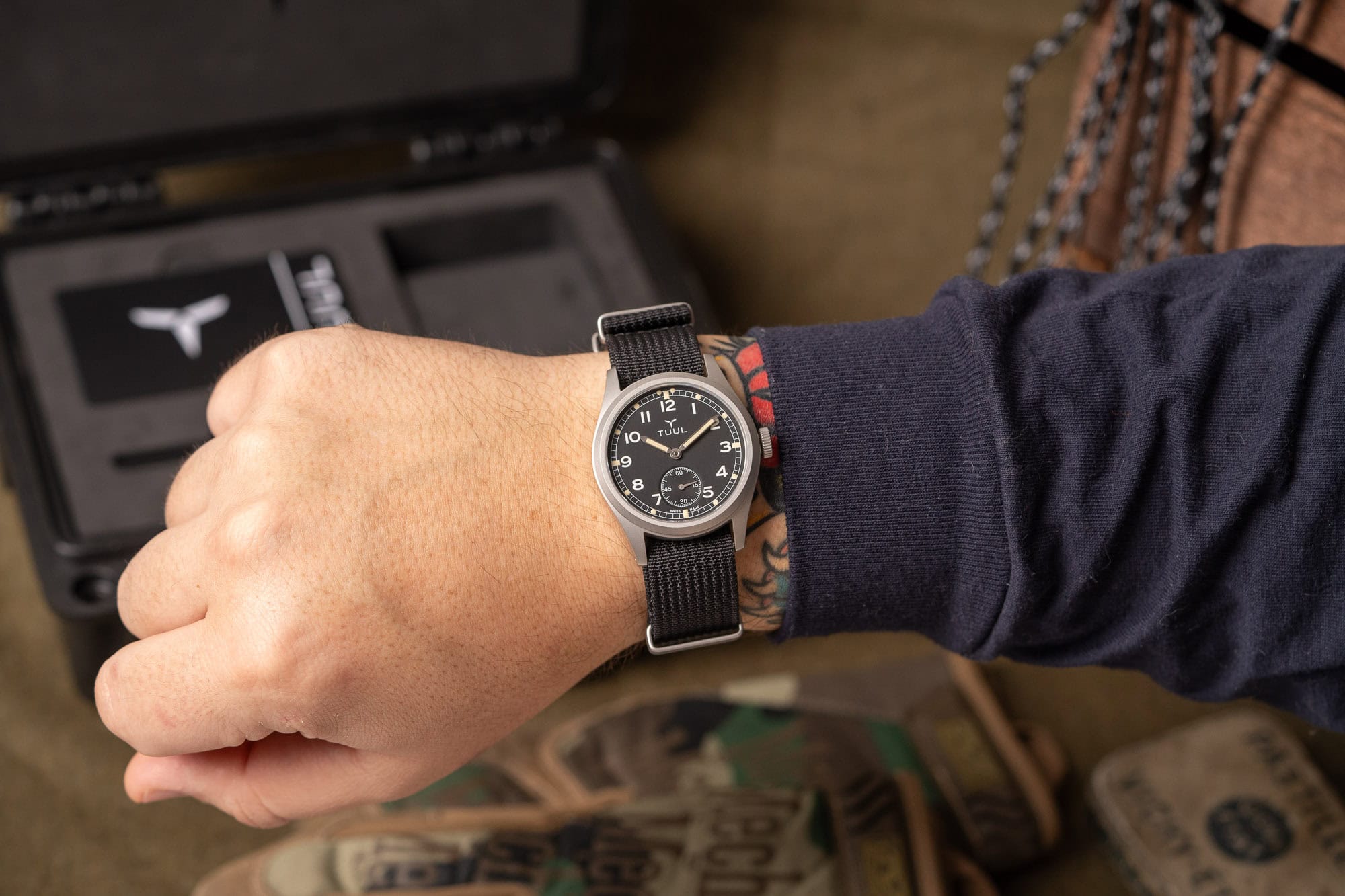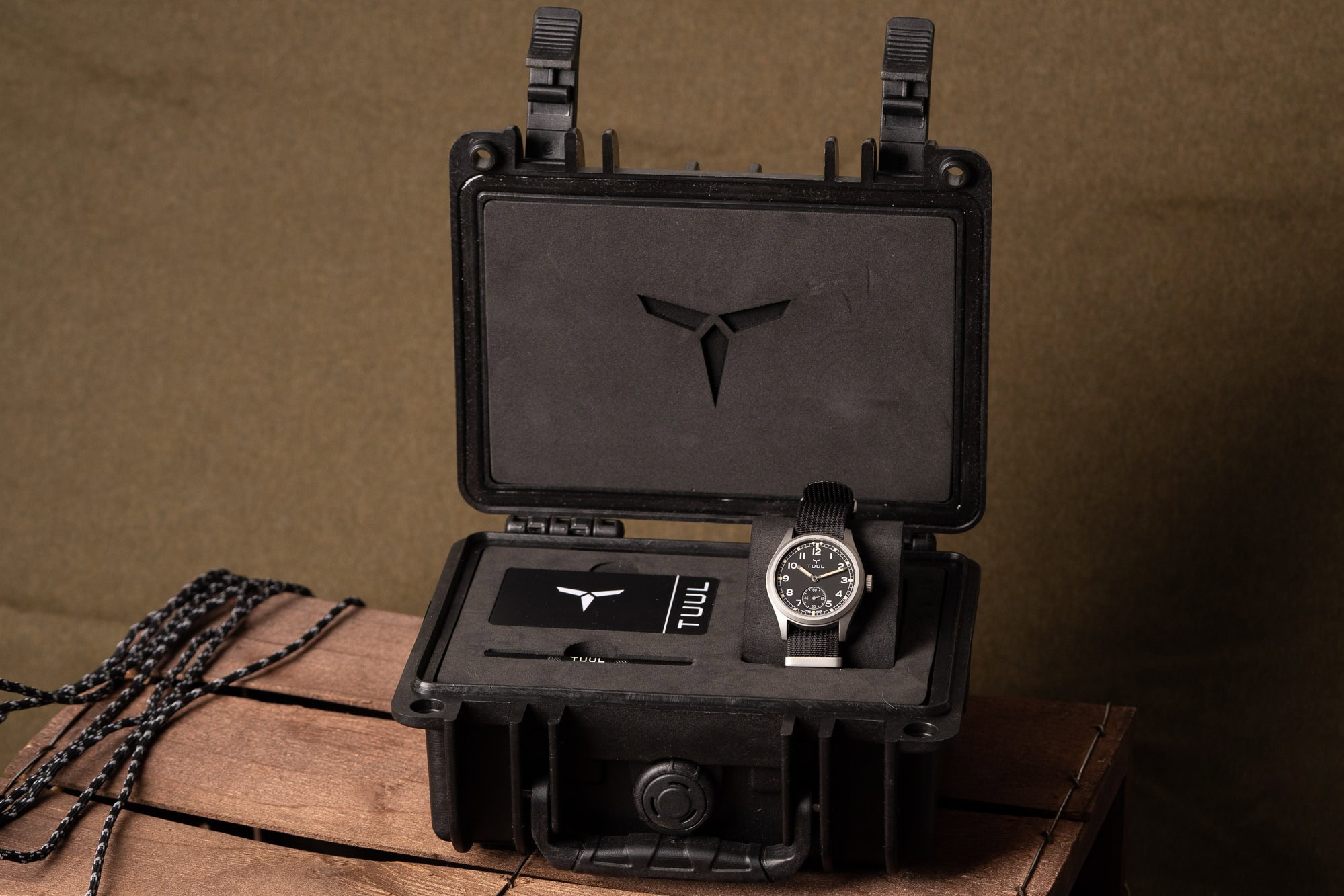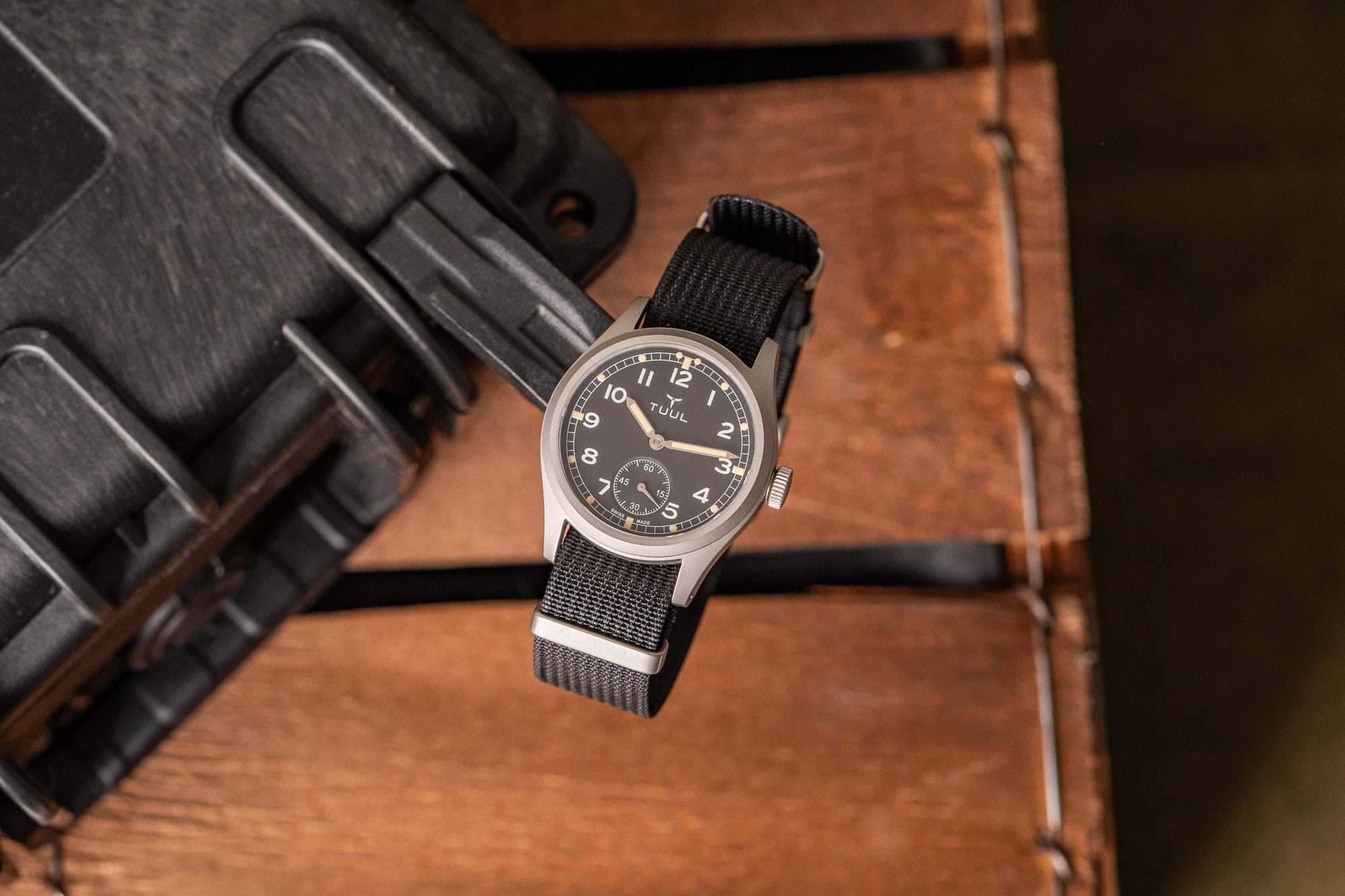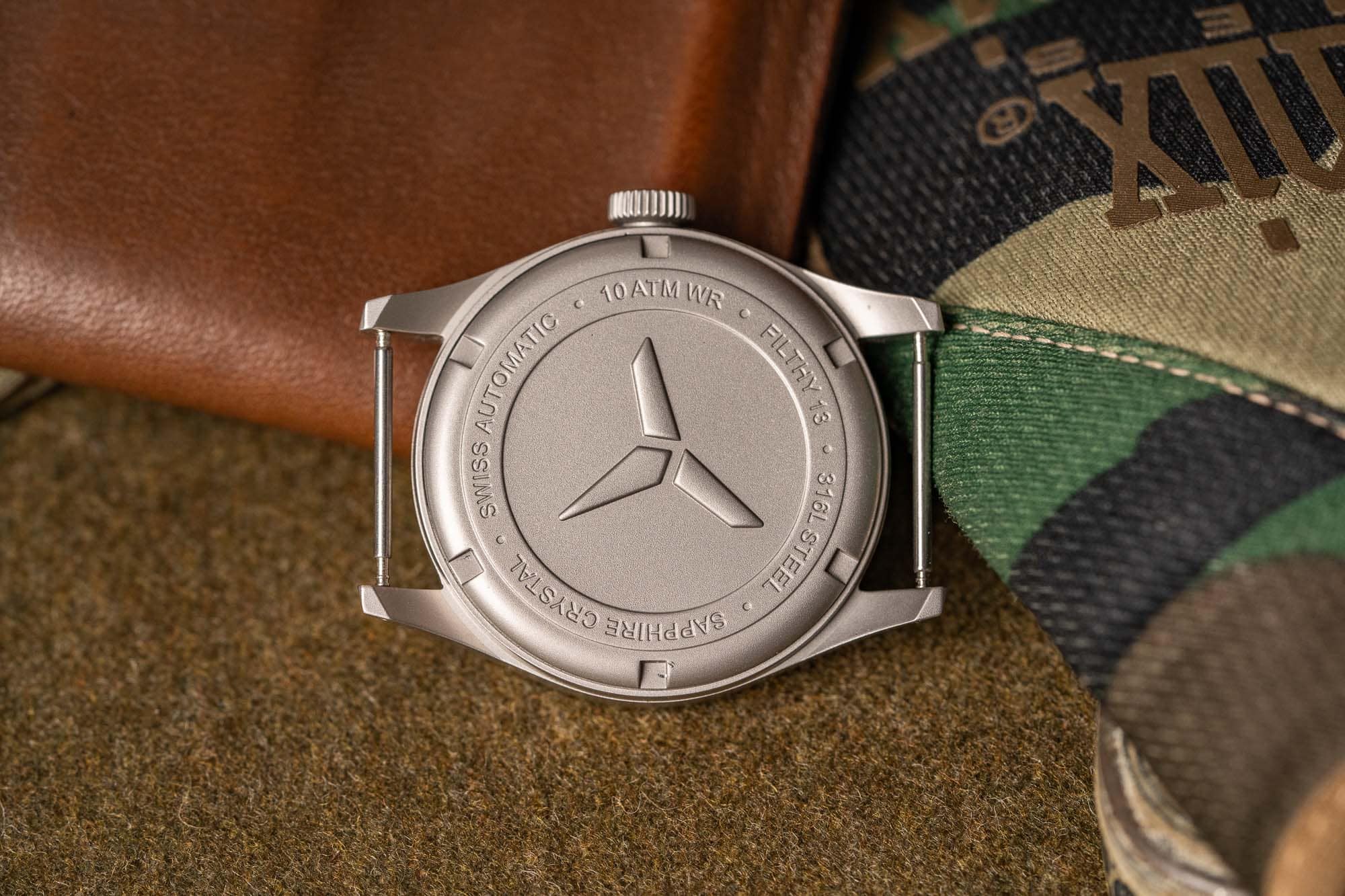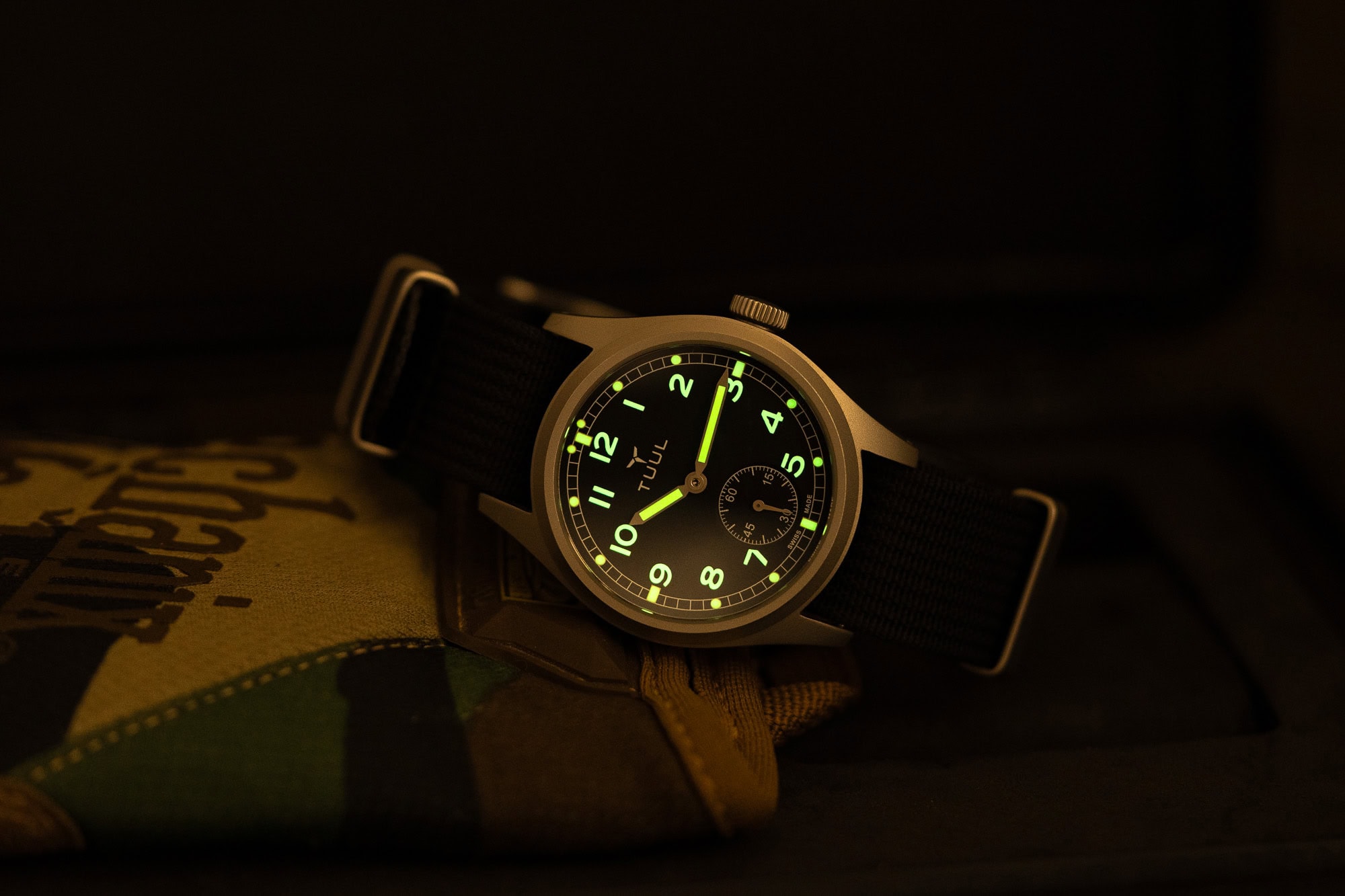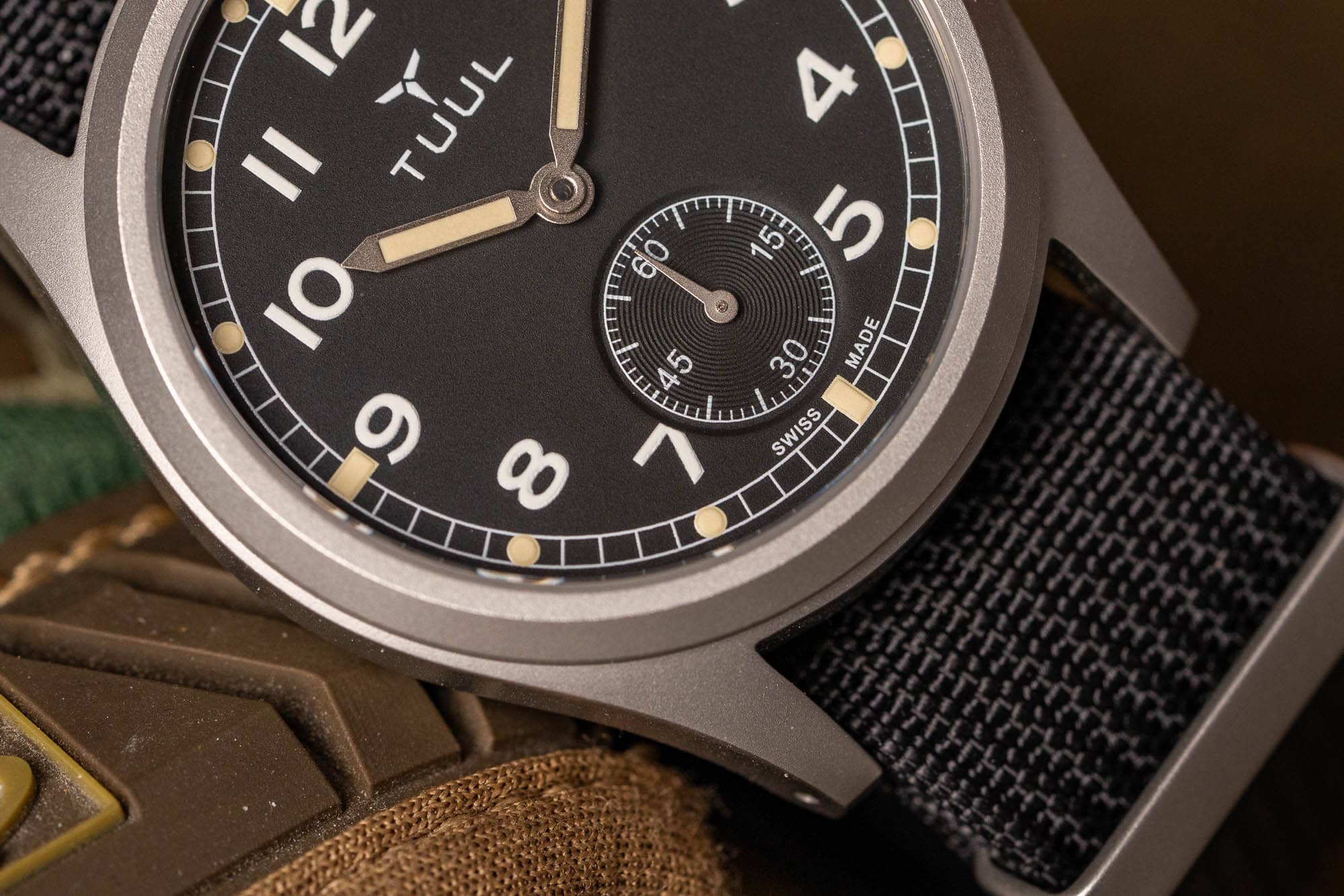It’s hard to deny the outward appeal of a field watch. Tactical but not overly macho, mature but not boring—the traditional field watch “style” is eminently wearable for combatants, explorers, mountaineers, and the regular old civilian crowd. Classics like the Hamilton Khaki Field, Bulova A-11 “Hack”, Seiko Alpinist, Rolex Explorer, and many, many more, are icons of the category, and it’s hard to feel like there’s much more to be innovated or improved upon.
The TUUL Filthy 13 is keenly aware of the history of the field watch. Its very name is a derivation of the “Dirty Dozen”—both the 1967 war movie about a squad of delinquent soldiers, and the twelve Swiss watchmakers commissioned to build a watch to help win World War II for the Allied forces in 1945. The Filthy 13 is a reference to Private Jake McNiece, the thirteenth member of the real-life military unit, left out of the film based on the squad’s feats—a cheeky signal of the Brooklyn-based company’s dedication to preserving the history and resilience of the field watch, while carving their own convention-breaking niche.
I was given the opportunity to test out the Filthy 13, and was immediately drawn in by the well-laid out history and inspiration behind the watch. My first field watch was a Timex Weekender Indiglo given to me by my grandfather—a watch I still have and wear frequently—and I regularly pine after the Hamilton and Seiko 5 lineups. At first glance, the Filthy 13 is a well-crafted continuation of field watch stylistic hallmarks, but I was determined to find out if its quirks lived up to its clever namesake.
First impressions are key for smaller brands, and TUUL has nailed the Filthy 13’s. The watch arrives cushioned inside a proper tactical box, with a delightfully satisfying locking mechanism and neat interior packaging. An ownership card and beautifully machined strap removal tool fill out the rest of the package. While watch collectors with carefully organized cedar display boxes and shelves filled with timepieces may not bat an eye at the Filthy 13’s packaging, I appreciate the care that TUUL put into the presentation of the watch. Given the price bracket, I suspect that the Filthy 13 is more likely to be a buyer’s first or second mechanical or automatic watch, so the thematic packaging leaves a very thoughtful impression, and provides a practical method of storing the watch when not out in the field.
One of the reasons I find field watches so versatile is that they tend to run medium-to-small in size, and the Filthy 13 is no different. At 38mm, the bead-blasted 316L stainless steel case isn’t tiny, but it’s guaranteed to fit just fine on most wrists. The smaller case size doesn’t mean it’s dainty, though; I measured the thickness at 12mm, giving the Filthy 13 a satisfyingly chunky, but not uncomfortable heft. The matte texture of the case is subtle, and gives the watch a high-end feel in the hand.
A handsomely embossed TUUL logo rules the center of the caseback, with specs and highlights engraved along the outer perimeter. What results is a tastefully subdued and appropriately tough-looking rear that matches the purpose-built aspirations of the watch as a whole. The practical persona of the case is furthered by the addition of drilled lugs and a 20mm lug width, making strap changes easy. The provided black textile strap is basic but well-made, with a matching steel buckle and keepers. I’m not typically a fan of NATO-style straps—I find them too bulky-feeling on the wrist for my taste—but the Filthy 13’s is not overly scratchy or thick, and I have had no problem wearing it through a variety of sedentary and active situations. I even took it out on a jog to test whether it chafed, an issue I’ve found with other textile straps, and experienced no such discomfort. Still, one could easily swap out the Nato for a leather or rubber strap, given the standard lug width, and I think it could even be made into a suitable dress watch with the introduction of the right strap.
Being a legitimate field watch, the Filthy 13 favors legibility over design complication. The model I tested was the black dial version with white printing details, a crisp and effortlessly legible combination. TUUL’s aesthetic ethos comes through clearly; the typography is brisk and bold, and the digits sport rounded edges, lending a period-correct military feel to the dial. In another nod to the historical origin of the field watch, the railroad minute track around the perimeter comes across as authentically tactical with an almost art-deco vintage flair. Thick indices mark the hours, with two dots additionally straddling the 12. The TUUL logo and name are stacked neatly beneath the 12, and a 60-second subdial sits in place of the 6, infringing slightly on the 7 and 5, though not enough to be a visual distraction. Swiss SuperLuminova is also applied to the indices, numbers, and index-style hands, and when paired with the thick typography, makes the watch extremely easy to parse in the dark.
“Swiss Made” is declared below the subdial, in reference to the Sellita caliber SW26101 automatic movement, which boasts a 41-hour power reserve. The screw-down 7mm crown is a welcome touch, sealing the watch to 100 meters of water resistance—plenty for the vast majority of adventurers. These features combined with the surprising brawn of the case lend the Filthy 13 a capable confidence that matches its rugged styling.
It’s hard to break through in a category crowded with legends, but the TUUL Filthy 13 proved to be a charming, comfortable, and up-to-the-task field watch in my time spent with it. I don’t doubt that the Filthy 13 could survive a skirmish, a field expedition, or a night on the town, and TUUL seems to be aiming squarely at comparable Hamilton and Seiko models with its price tag: $899.99 for the black or white dial stainless steel models, and $1,099.99 for the black or green dial bronze versions. The Filthy 13 successfully comes across as a clever nod to military history and a competent entrant into the ever-growing pantheon of adventure watches built to last. TUUL
